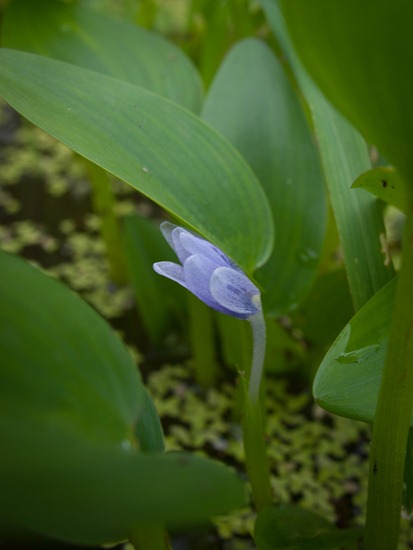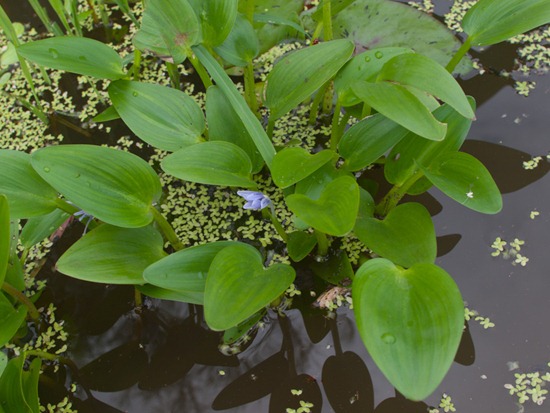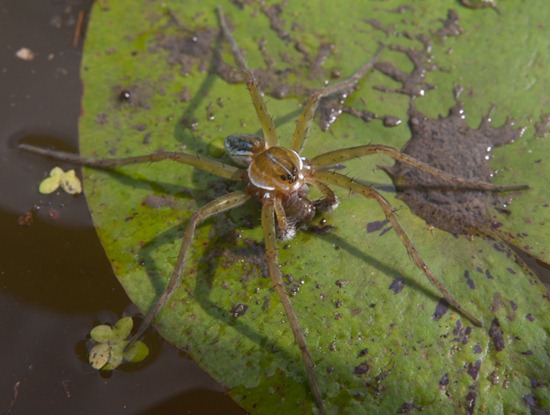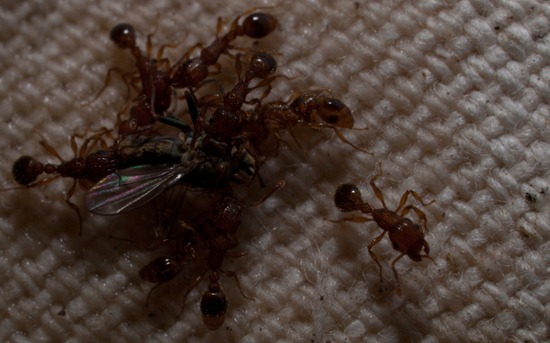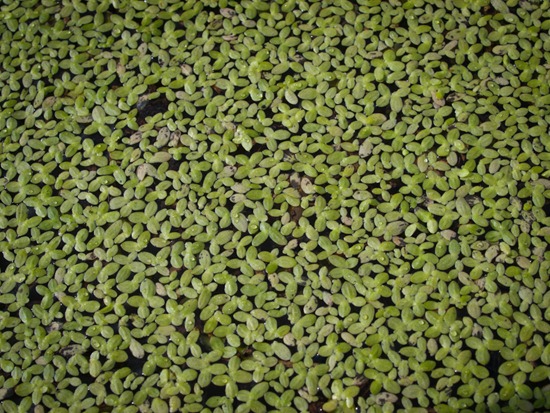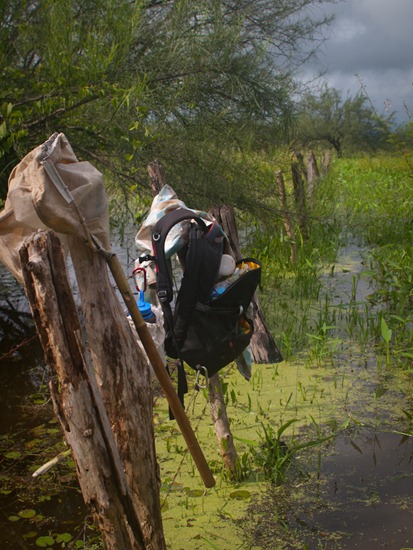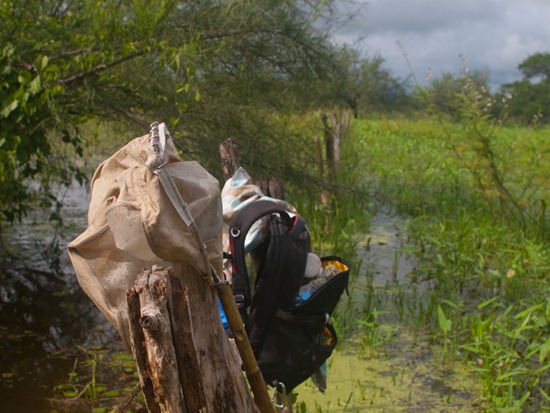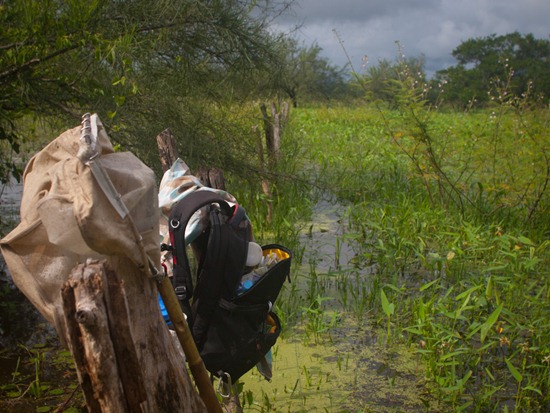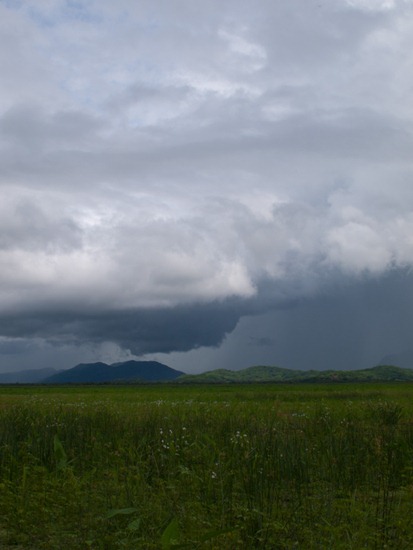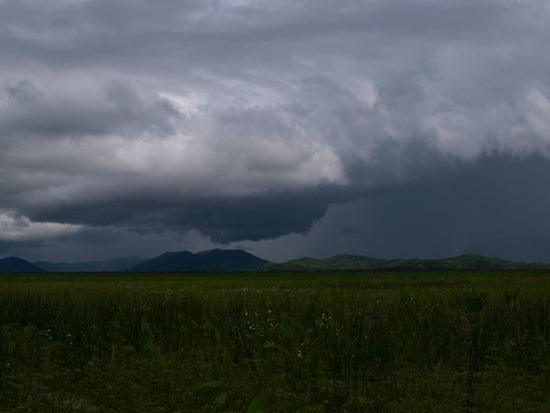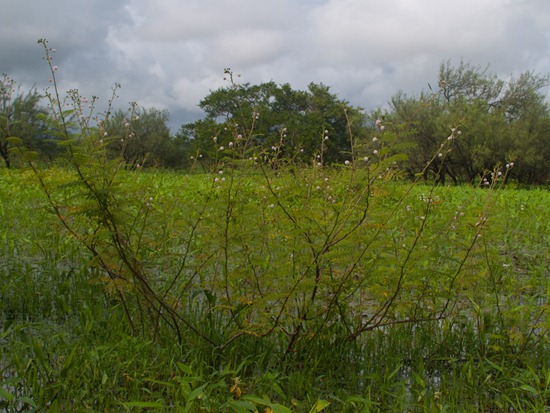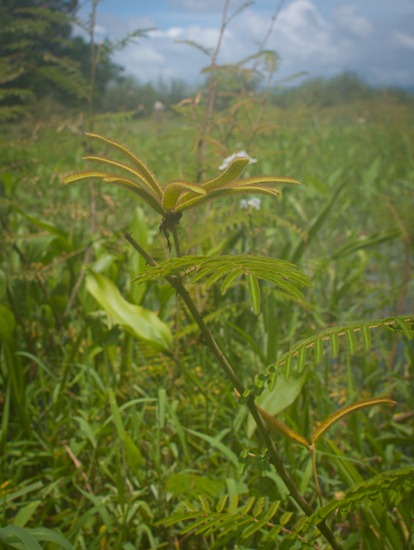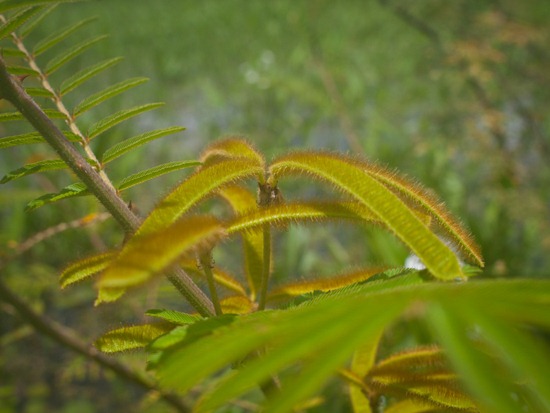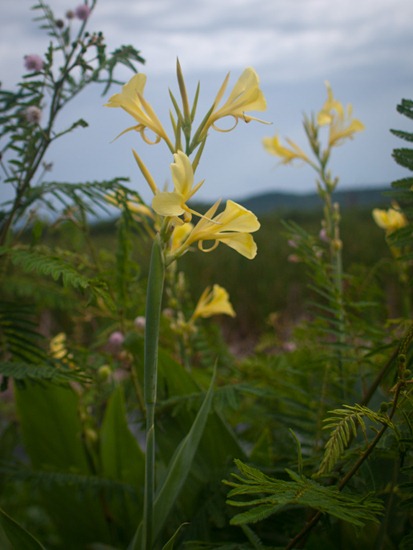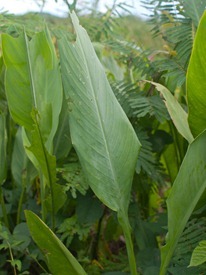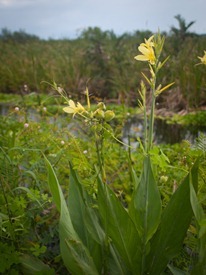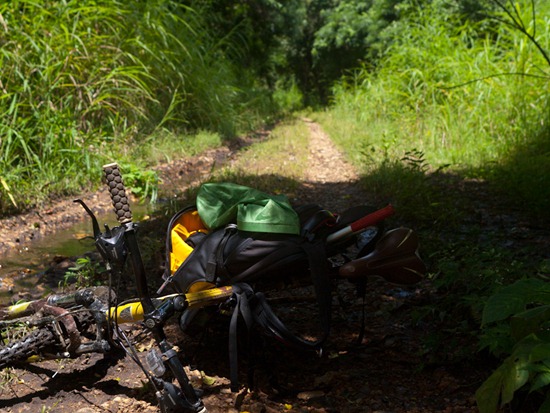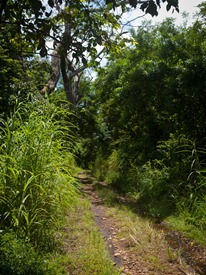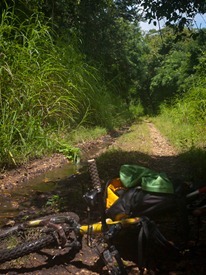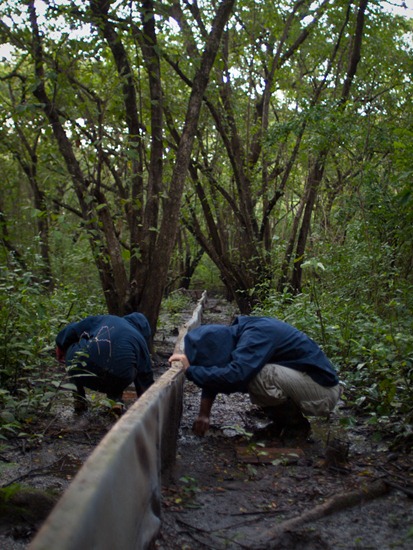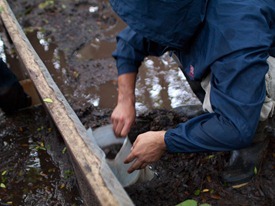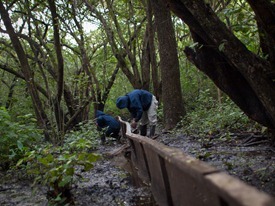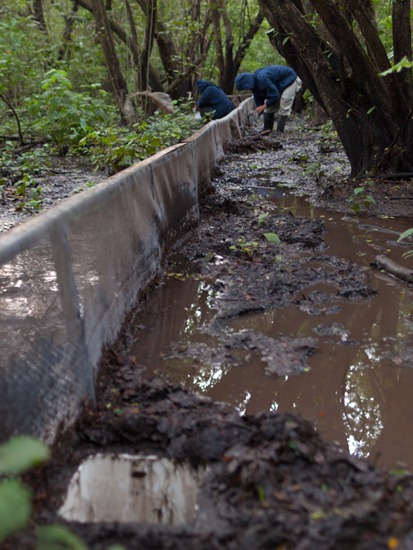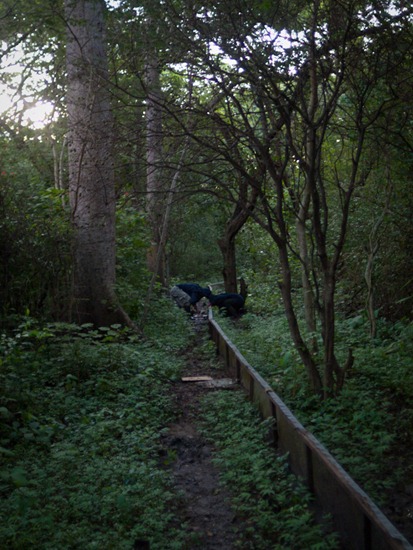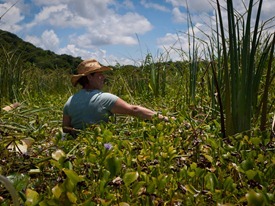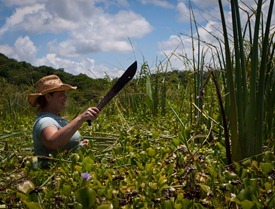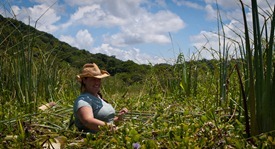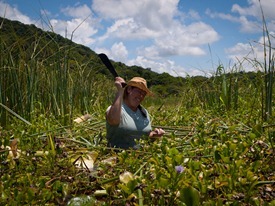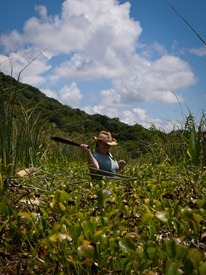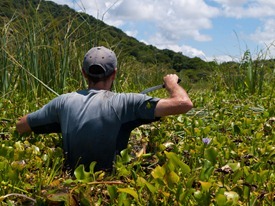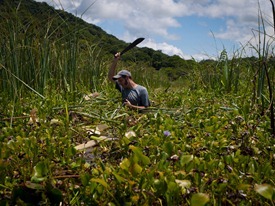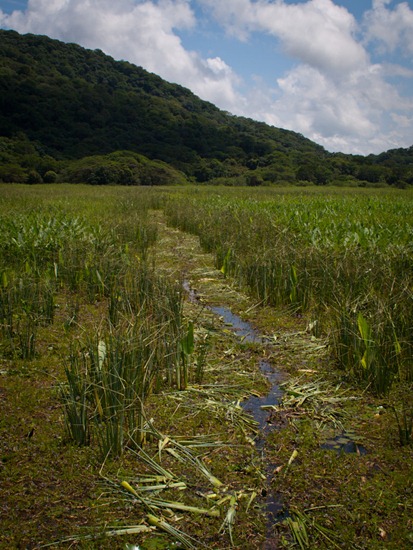There are at least 4 species of Pontederiaceae in the Tempisque River basin. Here is one: Heteranthera limosa, a small, emergent plant inhabiting well lit, recently flooded, shallow areas of wetlands. The entire plant is relatively delicate, perhaps as a result of fast growth. Unfortunately, I didn’t catch any with flowers open – it may occur during a certain time of the day, because I did see this open earlier in the morning.
Monthly Archives: October 2010
Fly predation
| The flies that are commonly seen on Echinodorus flowers are attracted to white objects and, perhaps, vegetation that’s been stirred up (well, the Syrphids certainly are – their increased abundance makes their buzz is loud in area’s I had recently walked through and disturbed within the wetland). Consequently, the flies are attracted to various white objects I’m carrying, and, occasionally one gets knocked down or otherwise temporarily incapacitated. The brief incapacitation resulted in two predation events picture here, both within less than 5 minutes.
A group of ants and a large, surface dwelling spider prey upon flies. |
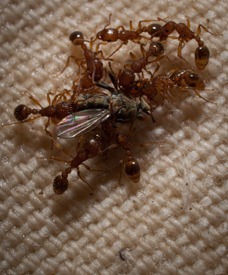 |
Lemna aequinoctialis
More stable isotope collection
A rainy, rainy season
Some more Mimosa pigra
Canna glauca
A bike trip to Catalina
Frog traps
Four 120 m long frog traps have been set up for Mahmood’s amphibian survey at Palo Verde. Nightly for two years ending in December, assistants collect, weigh, measure and count frogs that have fallen into 24 buckets buried in the ground on either side of the short fences shown below. The physical conditions of the traps vary, particularly given flooding events, but the environmental conditions are always harsh. The traps are set within 50 m of the wetland (at some points, like those here, they are more in the wetland), and mosquitoes have extraordinarily high abundances. The clouds of mosquitoes require use of full, hooded jackets to keep one’s sanity, which only emphasizes the heat and humidity of the surrounding dry forest. The data collected from this survey, however, provide an understanding of amphibian community and population dynamics in a region threatened with looming and dramatic climate shifts. These communities are so understudied, that one of the most common toad species (Incilius luetkenii) present at the park have only recently be described and separated from sister species.
Here, Arellys and Sergio open traps for the nightly collection. Most frogs caught at this time of year are Engystomops pustulosus (formerly known as Physalaemus pustulosus) froglets just emerging and travelling into the dark forest.
Constructing a trail through the Thalia

